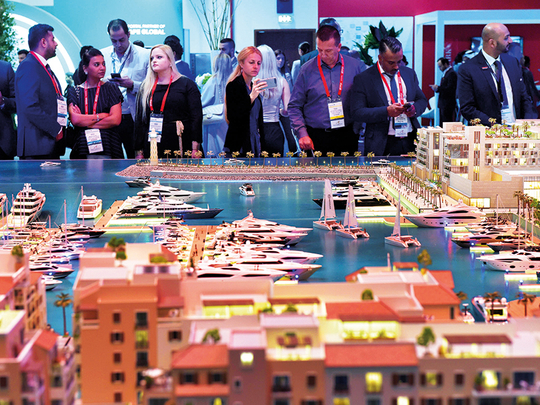
Dubai: For property investors in Dubai, the million-dollar- (or dirham) question is when they should think of selling.
Should they make an exit right now, given that some locations — the Downtown for instance — have started to see some stability? Or even seen gains, as is happening with villa prices on the Palm.
The fact is price stability and gains have been limited to a handful of clusters. And not everyone can make the kind of gains someone did selling an Emirates Hills villa for Dh23.3 million in July after acquiring it for Dh18.92 million. And all this within seven months.
But what of the rest who are thinking of an exit strategy? Property values in the city are down an average 20 per cent from their mid-2014 peaks.
“One might sell it now to get investment released to avoid any foreseeable depreciation,” said Moe Abeidat, chief technology officer of Property Monitor, part of the Cavendish Maxwell consultancy. “At the same time anyone who has purchased a property Dubai three or four years ago to sell now will [have to] bear a significant loss. Instead, [they might be better off] retaining it as a long-term strategy.”
A valid point — many sellers who managed to dispose off their properties recently have gotten nowhere near their asking prices. This is true at high-end locations, as well as in more mid-market surroundings.
A property owner at International City sold his unit for Dh500,000 late last year... after buying at Dh490,000 and holding it for the better part of a decade. But if he sold now, he would have got about Dh400,000/Dh410,000.
It’s the buyers who are spoilt for choice now. Studio unit prices start slightly below Dh300,000 for off-plan projects in International City, according to Cavendish Maxwell data, while a three-bed town house in Damac Hills can be had at “just shy of Dh1 million”.
Still, there are investors wanting to sell now than hold on. And this is showing up in the secondary market listings. “MBR [Mohammad Bin Rashid] City is one of the examples which has many units available for sale in the secondary market below their original prices,” said Abeidat. “The Sidra and Maple [projects], in particular, are worth mentioning.
“So, the decision to hold or sell ultimately depends on individual circumstances.”
Of the newly developing areas, there is a lot of buzz around Dubai Creek Harbour, where the first handovers at the luxury towers will start some time early next year.
“It is a location that has performed well despite an overall distress in the market,” said Abeidat. “New launches are still happening there and individual investors are holding their units to enjoy the gains expected once handovers start and [the] area shapes up.”
More off-plan or not? That is the question...
It’s not just property owners who are in a dilemma over whether they should hold back or sell now. Even developers are facing the same questions on what their off-plan strategy should be.
More and more off-plan launches could create a situation where large numbers of units could remain unsold. That would put further pressure on developer costs and margins.
But, to make matters worse, even delaying projects and sales launches might be tough. There are few private developers who can match the deeper pockets and resilience of master-developers.
“Margins are getting very thin and for developers to make a profit they have to sell off-plan,” said Firas Al Msaddi, CEO of fam Properties. “But the reality of the market gives them no option other than to hold back sales for now. And that can mean the death of their business — or secure finance, or some sort of funding, and develop to sell around completion, or even rent out until the market improves.”











